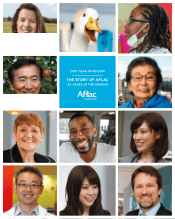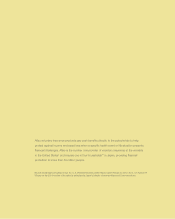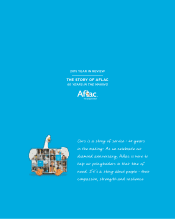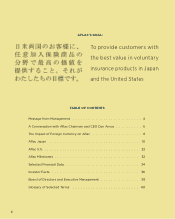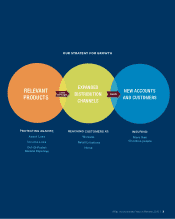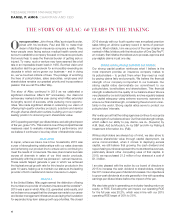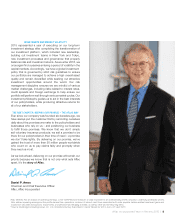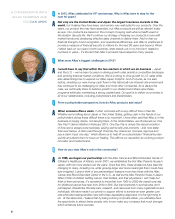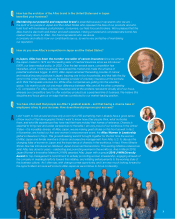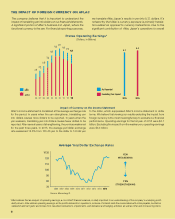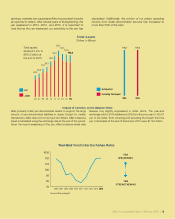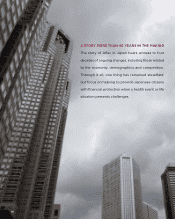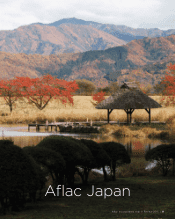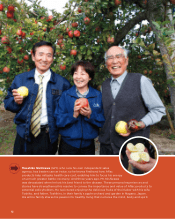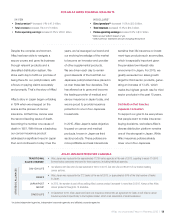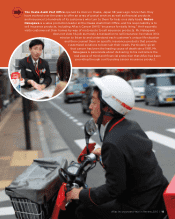Aflac 2015 Annual Report Download - page 8
Download and view the complete annual report
Please find page 8 of the 2015 Aflac annual report below. You can navigate through the pages in the report by either clicking on the pages listed below, or by using the keyword search tool below to find specific information within the annual report.
6
A CONVERSATION WITH
AFLAC CHAIRMAN AND
CEO DAN AMOS
Q
In 2015, Aflac celebrated its 60th anniversary. Why is Aflac here to stay for the
next 60 years?
A
Not only are the United States and Japan the largest insurance markets in the
world, but I believe they have been, and remain, very well suited to our products. Over the
years, our product line may have expanded, but Aflac products are still as relevant today
as ever. Our products are based on the concept of paying cash when a health event or
life situation disrupts life. We’ll continue our strategy of keeping our products in tune with
market trends and developing effective sales channels to deliver them. Add to that our
financial strength, brand recognition, and operational efficiencies, and Aflac is positioned to
provide a measure of financial security to millions for the next 60 years and beyond. When
I reflect back on our years in both countries, what stands out in my mind isn’t related to
numbers or years – it’s the fact that Aflac’s products have helped so many people.
Q
What were Aflac’s biggest challenges in 2015?
A
I would have to say that within the two markets in which we do business – Japan
and the U.S. – we’ve been focused on driving growth rates amidst a competitive landscape
and evolving financial market conditions. We’re working to drive growth in U.S. sales while
also determining how to expand our Aflac Japan footprint. And of course, as I’ve said
before, investing our new money cash flows in this historically low interest rate environment
has continued to be challenging for Aflac and most other companies. As is always the
case, we continually strive to balance growth in our dividend and share repurchase
programs while also maintaining a strong capital base. Our goal is to deliver our promise to
all of our stakeholders, including policyholders and shareholders.
Q
From a policyholder perspective, how do Aflac products add value?
A
When someone files a claim, it often coincides with a very difficult time in their life.
Whether we’re talking about Japan or the United States, getting cash in the hands of our
policyholders during these difficult times is so important. I have often said that Aflac is in the
business of paying claims, not denying them. In the United States, we introduced our One
Day PaySM claims initiative in February 2015. One Day Pay is simply the natural evolution
of how we’ve always done business: paying claims fairly and promptly – and now faster
than ever before. A claim paid through One Day Pay means we “process, approve and
pay a claim in just one day,” which allows us to help lift our policyholders’ financial burden
quickly and allows them to focus on healing. This affirms our reputation as a strong product
innovator and trusted brand.
Q
How do you view Aflac’s role in the community?
A
In 1995, we began our partnership
with the Aflac Cancer and Blood Disorders Center of
Children’s Healthcare of Atlanta, and in 2001, we established the first Aflac Parents House in
Japan, with two more added over the years. Since that time, these endeavors have been life
changing to many, including me, while growing larger and more meaningful than I could have
ever imagined. I cannot think of any partnerships I treasure more than those with the Aflac
Cancer and Blood Disorders Center in the U.S., as well as the Aflac Parents House in Japan.
When I think of children battling cancer, their families, and their physicians, I can’t help but
think of them as heroes. It’s wonderful to know that from 1965 to 2000 the overall cure rate
for childhood cancer has risen from 20% to 80%. But improvements in survival rates don’t
just happen. Results like this take care, research, and resources from many organizations and
individuals. We have made it our priority to support efforts to achieve an even greater cure
rate while also helping families cope with these devastating diagnoses. It’s the right thing to
do. At the same time, I believe that by being a strong corporate citizen, you ultimately have
the opportunity to attract better people, who in turn make your company that much stronger,
which enhances future success.

